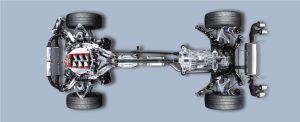Blog

How Digital Transformation Supports ISO17025 Compliance?
Digital transformation helps you grow beyond LIMS and build a resilient laboratory process management while complying with ISO17025 standard.

Why Lab Management Software is the Key to Unlocking Vehicle Testing Efficiency?
In the automotive sector, rigorous vehicle testing ensures safety and performance standards are met, straining testing labs. Efficient lab and asset management are crucial for maintaining quality and meeting demands.

Maximizing Performance and Reliability: The Significance of Powertrain Testing in EV Vehicles
Powertrain testing in EV development is essential for optimizing performance and efficiency. Engineers fine-tune the system to achieve better acceleration, range, and vehicle dynamics. Efficiency evaluations help reduce energy loss and improve regenerative braking, increasing range and reducing environmental impact. Safety and reliability, especially for high-voltage components and battery safety, are top priorities in powertrain testing.

Efficiency and Precision: The Impact of Test Data Analytics in EV Testing
Embrace the data-driven evolution of Electric Vehicle (EV) testing with Test Data Analytics. Experience a new era of precise and efficient development, propelling the automotive industry into innovation like never before

Upgrading IC Engine Test Bed to EV Motor Test Bed
The transition from ICE vehicles to EVs is driven by several factors, including environmental concerns, cost, time, and evolving consumer preferences. An EV testbed provides a controlled environment for evaluating electric powertrains, motors, battery systems, and other crucial components.

What Is Model-Based Development in Automotive?
Model-based development approach allows engineers to design, build and validate the software code in a fully virtual environment before deploying or integrating it with the live hardware components. In essence, it is an advanced level of development leveraging simulation.

Top 3 Challenges of Engineering Enterprise CIO?
Product Validation Management (PVM) is an approach that employs verification and validation of requirement analysis, function design, and software development in the engineering process. This model is heavily focused on testing and iterative development and allows organizations to easily manage deadlines and costs.

Data at the Heart of The Smart Test Bed
Since creating safe, effective, and economical mobility concepts is the primary objective of the automobile business, a lot of novel ideas are being tested in simulated or actual testing scenarios.
It’s interesting to note that using advanced automation and sensors to guide the testing process does not automatically qualify as smart testing. The key to making smart testing smart is the “data” that is at its core. To see how reliable data contributes to accurate test results, explore the article.

Ensuring the Successful Implementation of a Smart Test Bed
As the world around us becomes embroiled in VUCA, organizations and industries globally look for ways to improve resilience and responsiveness in their business. The rise of technologies such as AI and the revolutionizing Industry 4.0 has been a response to changing market demands and the increasing need to drive cost effectiveness while influencing productivity and profitability.
